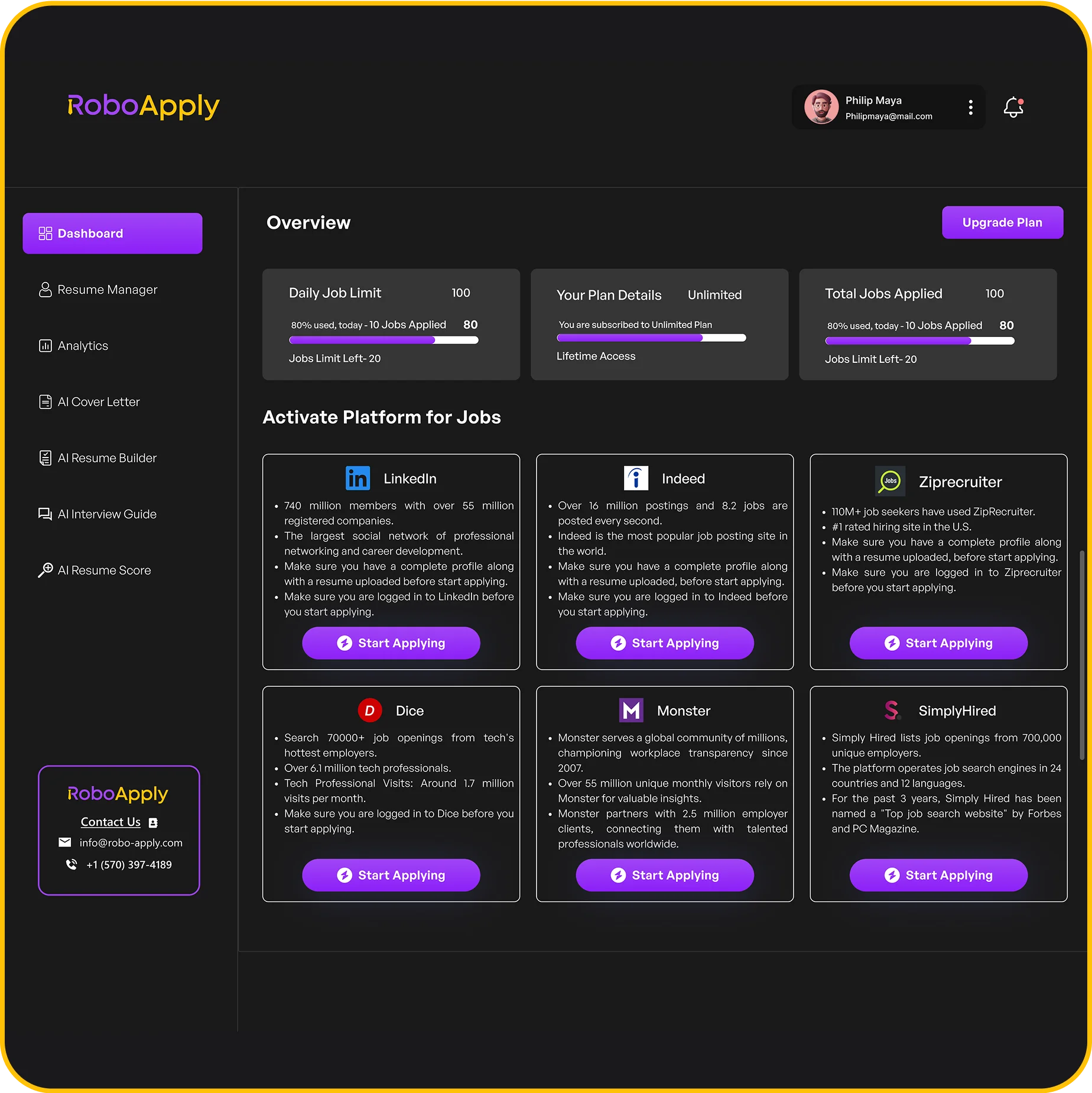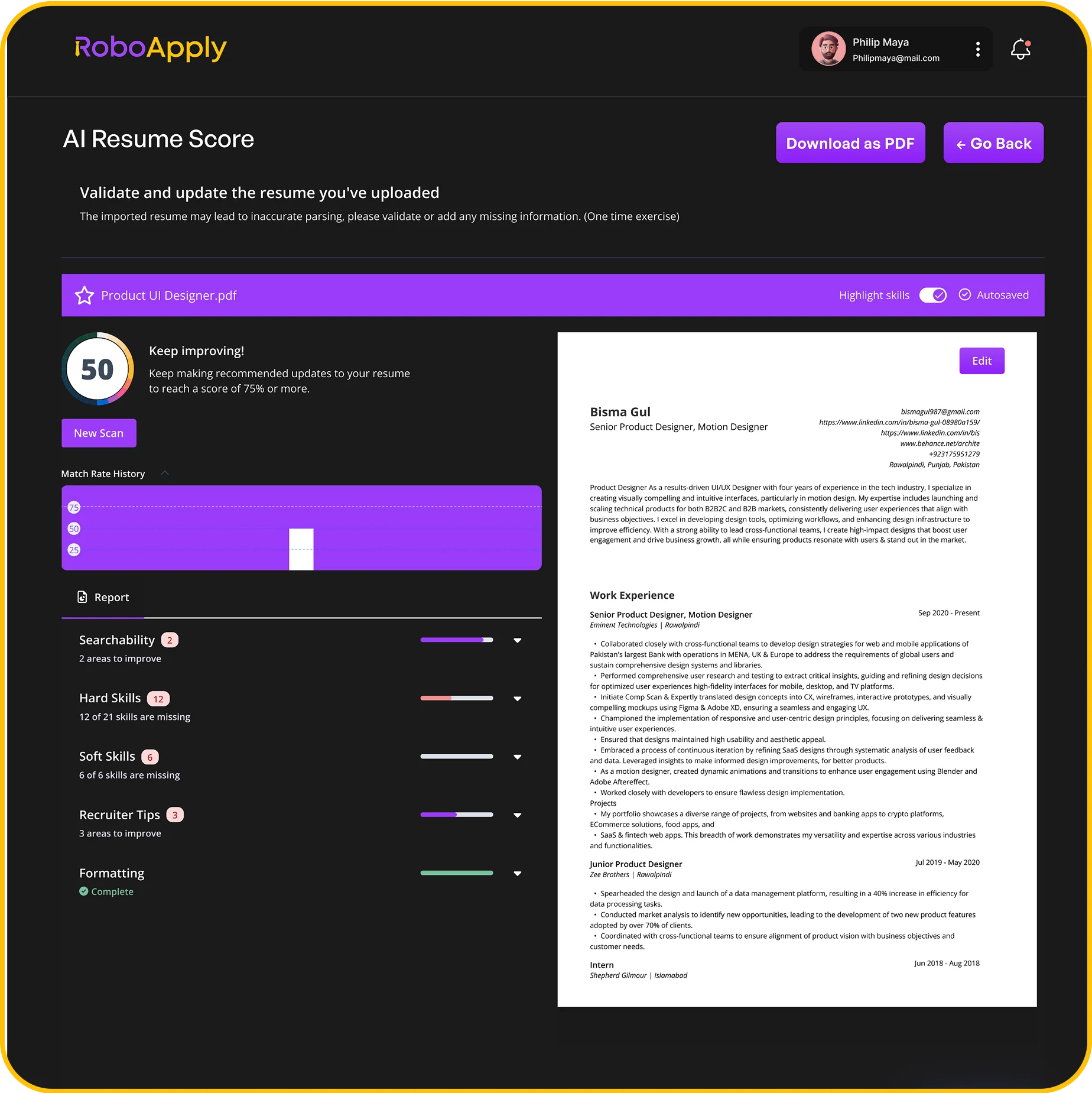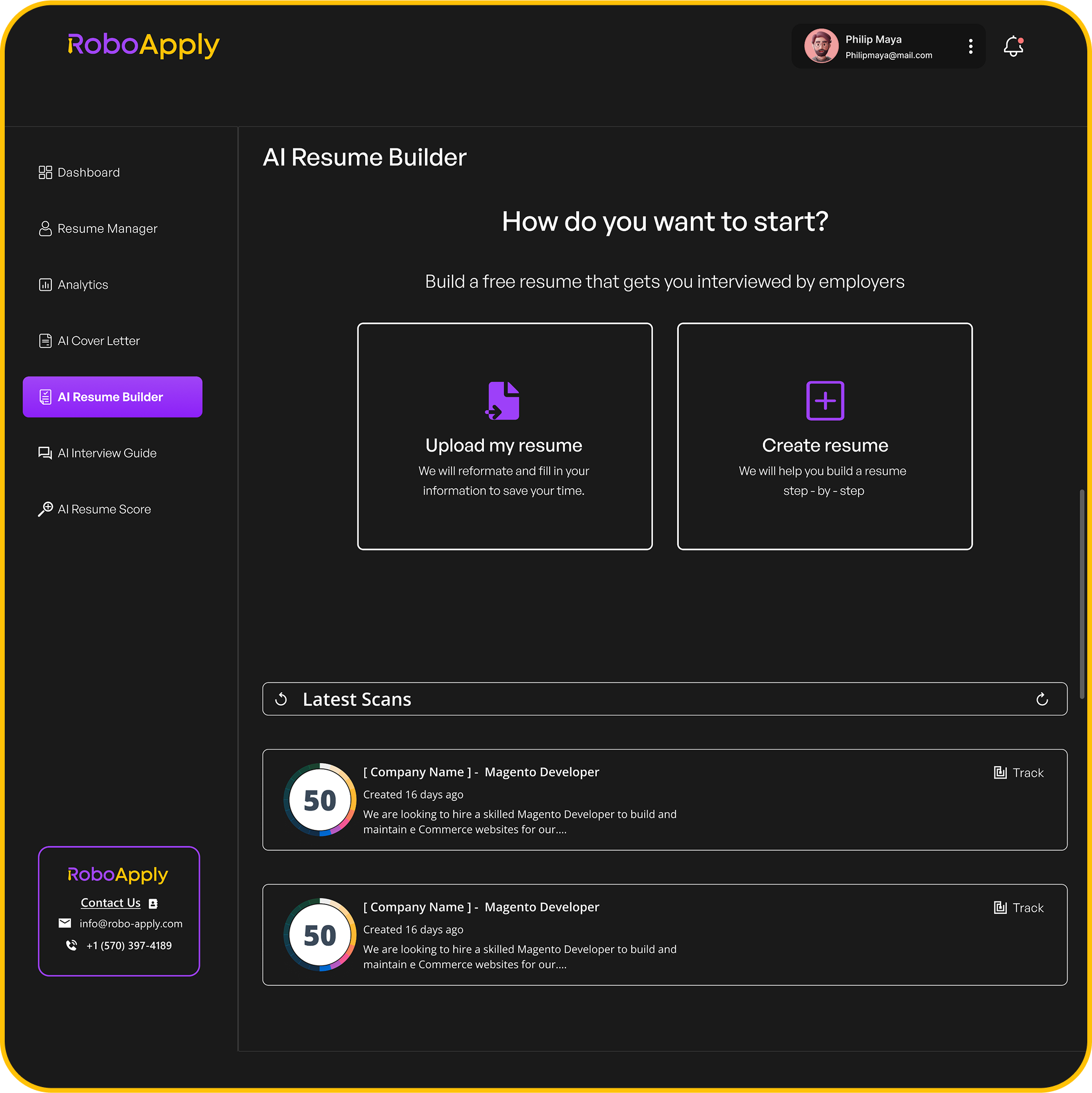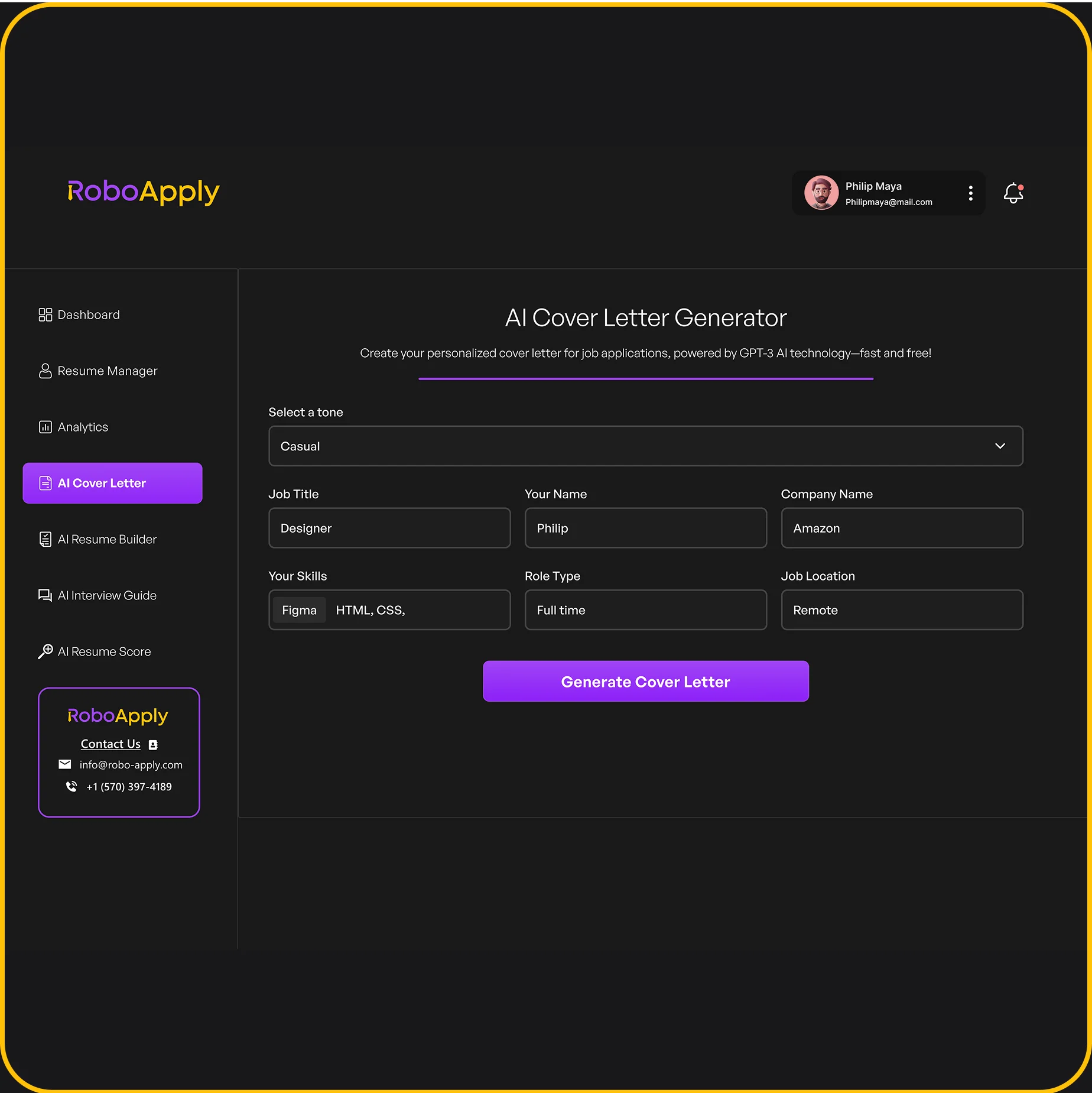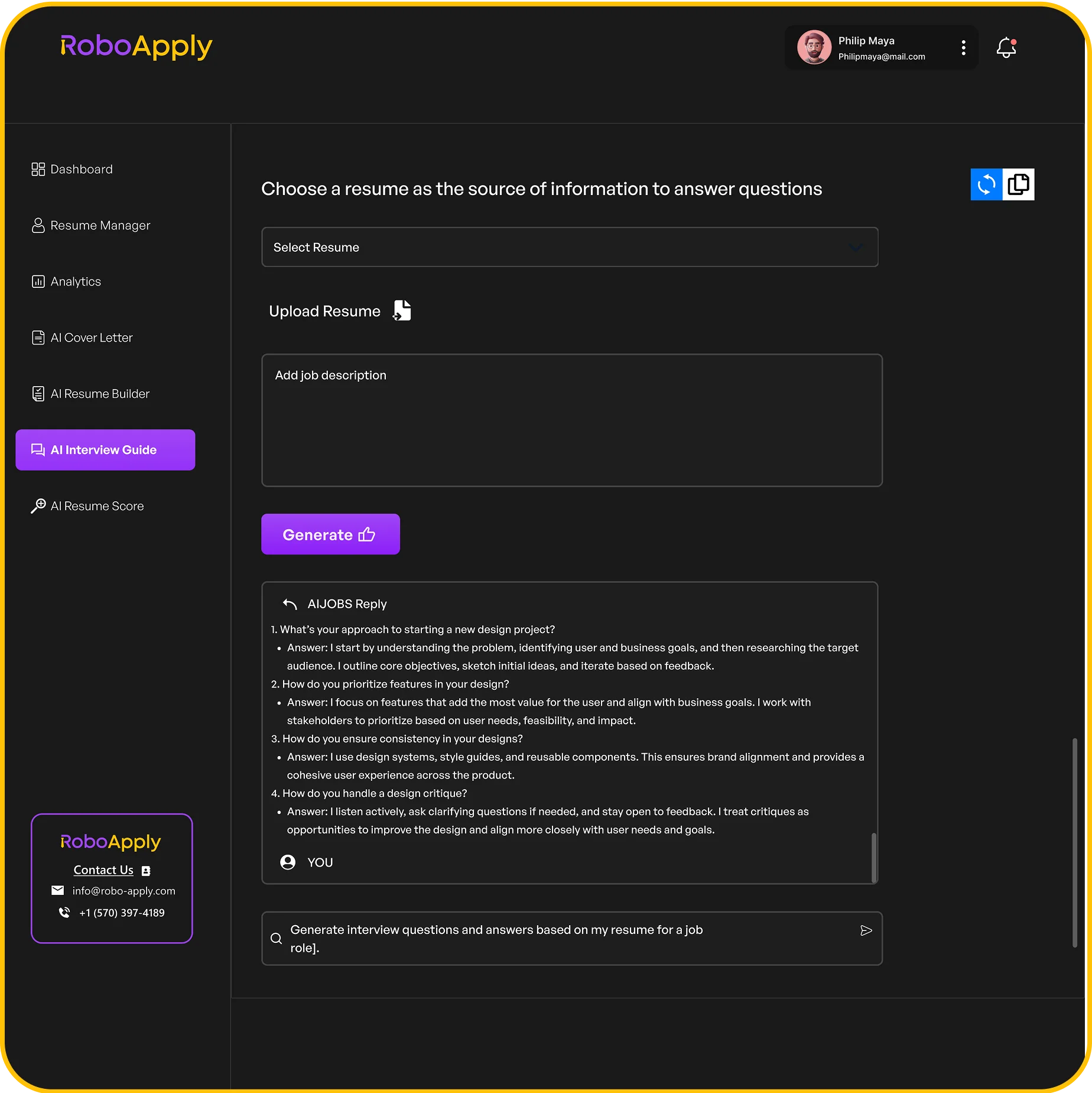So, you’re looking to put together a Medical Surgical Nurse Resume that really gets noticed. It can feel like a big job, figuring out what to include and how to make it all look good. This guide is here to walk you through each part of your resume, from your basic contact info to any special awards you’ve picked up. We’ll cover everything you need to know to build a strong resume for 2025, helping you show off your skills and experience in the best way possible.
Key Takeaways
- Always put your best contact information right at the top of your Medical Surgical Nurse Resume.
- A strong resume summary quickly tells hiring managers why you’re a good fit.
- Detail your work history with clear examples of your Medical Surgical Nurse duties and successes.
- List all your relevant education, including degrees and institutions.
- Make sure to include any certifications that are important for a Medical Surgical Nurse role.
1. Contact Information
Okay, so first things first: your contact info. This section is super straightforward, but absolutely crucial. You want to make it as easy as possible for recruiters to get in touch with you. Think of it as your digital handshake. RoboApply can help ensure this section is clear and error-free, preventing missed opportunities.
Here’s what you should include:
- Full Name: Use a professional format (e.g., John Smith, not Johnny Smith).
- Phone Number: Make sure it’s a number you actually answer or check regularly.
- Email Address: Keep it professional (no funny nicknames, please!).
- LinkedIn Profile (Optional): If you have a well-maintained LinkedIn profile, include it. It’s a great way for recruiters to see more about your experience. Make sure your resume is tailored to the job description.
- Location: You don’t need to include your full street address. Just city and state are fine (e.g., Anytown, CA).
It’s a good idea to double-check this section for typos. A simple mistake in your phone number or email address can mean a missed opportunity. Seriously, triple-check it!
It’s also worth considering how your contact information appears on different devices. Is your email address easy to read on a mobile phone? Is your LinkedIn profile link working? These little details can make a big difference. You can also use a resume builder to create a surgical nurse resume that is ATS-friendly.
Here’s an example:
John Smith
(555) 123-4567
john.smith@email.com
LinkedIn: linkedin.com/in/johnsmith
Anytown, CA
Keep it clean, simple, and easy to read. That’s the key!
2. Resume Summary
A resume summary is your chance to make a strong first impression. It’s a brief overview of your skills and experience, tailored to the specific medical-surgical nursing position you’re applying for. Think of it as your elevator pitch – a quick snapshot that convinces the hiring manager to keep reading. A well-crafted summary highlights your key qualifications and career goals, showing why you’re the perfect fit for the job.
Here’s what to keep in mind when writing your resume summary:
- Keep it concise: Aim for 3-4 sentences.
- Focus on your most relevant skills and experience.
- Tailor it to each job you apply for. Use keywords from the job description.
- Highlight your achievements and quantify them whenever possible. For example, "Reduced patient readmission rates by 15% through improved discharge planning."
- Use action verbs to make your summary more impactful. Words like "managed," "implemented," and "coordinated" show initiative.
A strong resume summary can significantly increase your chances of getting an interview. It’s your opportunity to showcase your value and make a lasting impression on the hiring manager. RoboApply can help you tailor your resume summary to each job description, ensuring you highlight the most relevant skills and experience.
Here’s an example of a strong resume summary for a medical-surgical nurse:
Dedicated and compassionate Medical-Surgical Nurse with 5+ years of experience providing exceptional patient care in fast-paced hospital settings. Proven ability to assess patient needs, develop and implement individualized care plans, and collaborate effectively with multidisciplinary teams. Seeking a challenging and rewarding opportunity to advance career at healthcare facilities and contribute to a positive patient experience.
3. Work Experience
Your work experience section is super important. It’s where you show employers what you’ve actually done and how well you’ve done it. Don’t just list your duties; highlight your accomplishments and use action verbs to make your experience pop. RoboApply can help you tailor this section to match the job description, making sure you include the keywords that employers are looking for.
Here’s how you can structure your work experience section:
- Job Title: Medical Surgical Nurse
- Employer: [Hospital Name]
- Dates of Employment: [Start Date] – [End Date]
- Location: [City, State]
Then, under each job, list your responsibilities and achievements using bullet points. Try to quantify your accomplishments whenever possible. For example, instead of saying "Administered medications," say "Administered medications to an average of 20 patients per shift with 99% accuracy."
Remember to tailor your work experience section to each job you apply for. Highlight the experiences and skills that are most relevant to the position. This shows the employer that you’re a good fit for the job and that you’ve taken the time to understand their needs. You can use ATS optimization to make sure your resume gets noticed.
Here’s an example:
Medical Surgical Nurse
[City General Hospital], [City, State] | [Start Date] – [End Date]
- Provided direct patient care to an average of 6-8 patients per shift, including medication administration, wound care, and monitoring vital signs.
- Collaborated with physicians and other healthcare professionals to develop and implement patient care plans.
- Educated patients and families on disease management, medication adherence, and post-discharge care.
- Responded to rapid response and code blue situations, demonstrating quick thinking and effective teamwork.
- Reduced patient falls by 15% through the implementation of a new fall prevention protocol.
- Mentored and trained new nursing staff, fostering a positive and supportive work environment.
This example shows how you can use action verbs and quantifiable achievements to make your work experience section stand out. Remember to tailor your resume to each job you apply for, and use RoboApply to help you streamline job applications and make sure your resume is seen by employers.
4. Education
Your education section is where you list your academic qualifications. It’s pretty straightforward, but there are a few things to keep in mind, especially for nursing positions. RoboApply can help you tailor this section to match specific job requirements.
Example
- Degree: Bachelor of Science in Nursing (BSN)
- University: University of Example State
- Graduation Date: May 2020
- GPA: 3.8 (Optional, but include if it’s high!)
- Relevant Coursework: Medical-Surgical Nursing, Pharmacology, Anatomy & Physiology
Tips for Listing Your Education
- List your degrees in reverse chronological order (most recent first).
- Include the full name of the degree, the name of the institution, and your graduation date. If you haven’t graduated yet, list your expected graduation date.
- You can include your GPA if it’s above 3.5. It shows you put in the work.
- Listing relevant coursework can highlight specific knowledge. For example, if you took a Wound Care course, definitely include that.
- Don’t include high school information if you have a college degree. It’s just not relevant anymore.
If you have multiple degrees, prioritize the ones most relevant to the medical-surgical nursing field. For instance, if you have a BSN and an MSN, list both, but put the MSN first. If you have a degree in an unrelated field, you can still include it, but keep it brief.
Associate Degree vs. Bachelor’s Degree
Most hospitals are moving towards requiring or preferring a Bachelor of Science in Nursing (BSN). However, an Associate Degree in Nursing (ADN) is still a valid entry point. Here’s how to present each:
Associate Degree in Nursing (ADN):
- Degree: Associate Degree in Nursing (ADN)
- Institution: Community College of Example
- Graduation Date: May 2018
- Mention your RN license right after this section to show you’re qualified.
Bachelor of Science in Nursing (BSN):
- Degree: Bachelor of Science in Nursing (BSN)
- Institution: University of Example State
- Graduation Date: May 2020
- This is generally preferred by employers. It shows a deeper understanding of nursing principles.
What if You’re Still in School?
If you’re currently pursuing your nursing degree, you can still include it on your resume. Here’s how:
- Degree: Bachelor of Science in Nursing (BSN) (Expected Graduation: May 2026)
- Institution: University of Example State
- Include your expected graduation date.
- List any relevant coursework you’ve already completed. This shows what you’re learning.
- Mention any clinical rotations you’ve done. This gives employers an idea of your practical experience.
Additional Education
If you have any other relevant education, such as certifications or workshops, you can include them here or in a separate "Certifications" section. For example, continuing education courses like Wound Care & Pressure Ulcer Management can really make your resume stand out. These show you’re committed to ongoing learning and staying up-to-date with best practices.
5. Certifications
Certifications show you’re serious about your career and have the skills to back it up. Listing relevant certifications on your resume can significantly boost your chances of getting noticed by employers. RoboApply can help tailor your resume to highlight these credentials, making sure they align with the job description.
Here’s why certifications matter:
- They prove you have specific knowledge and skills.
- They show commitment to professional development.
- They can make you more competitive in the job market.
Think of certifications as extra proof that you know your stuff. It’s like saying, "Hey, I didn’t just learn this on the job; I went the extra mile to get certified!"
Certifications are a great way to stand out. They demonstrate a commitment to excellence and a willingness to invest in your professional growth. Make sure to list them clearly and prominently on your resume.
Some common certifications for medical-surgical nurses include:
- CMSRN (Certified Medical-Surgical Registered Nurse): This shows you’ve got a solid base of knowledge in med-surg nursing. If you are seeking national board certification, this is a great option.
- RN-BC (Registered Nurse-Board Certified): This is a general certification that can apply to various specialties, including medical-surgical. To excel in travel nursing, consider this RN-BC.
- ACLS (Advanced Cardiovascular Life Support): Super important for handling emergencies. The ANCC Medical-Surgical Nursing board certification examination is a great way to show your expertise.
- BLS (Basic Life Support): A fundamental certification for all healthcare professionals.
- CEN (Certified Emergency Nurse): While focused on emergency care, it can be valuable in med-surg too.
Make sure to include the full name of the certification, the issuing organization, and the date you received it. If it expires, also include the expiration date.
6. Skills
Your skills section is where you show off what you’re good at. It’s not just about listing things; it’s about showing you have the right skills for the job. RoboApply can help you tailor this section to match the job description, making sure you highlight the most relevant abilities.
Here’s how to make your skills section shine:
- Hard Skills: These are the technical abilities you’ve learned. Think medication administration, IV insertion, and electronic health record systems. Be specific!
- Soft Skills: These are your people skills. Communication, empathy, and teamwork are key. Give examples of how you’ve used these skills.
- Technical Skills: List any specific equipment or software you’re proficient with. This could include ventilators, cardiac monitors, or specific EMR systems.
Here’s an example of how to list your skills:
- Medication Administration: Proficient in administering a wide range of medications, including IV medications, oral medications, and injections. Experienced in calculating dosages and monitoring patients for adverse reactions.
- Wound Care Management: Skilled in assessing, treating, and documenting various types of wounds, including surgical wounds, pressure ulcers, and traumatic injuries. Knowledgeable in wound care products and techniques.
- Patient Assessment: Able to perform comprehensive patient assessments, including vital signs, physical examinations, and neurological assessments. Experienced in identifying and responding to changes in patient condition.
- IV Insertion: Proficient in inserting peripheral IVs and managing central lines. Knowledgeable in infection control practices and techniques.
- Electronic Health Records (EHR): Experienced in using various EHR systems, including Epic and Cerner. Able to document patient information accurately and efficiently.
- Communication: Excellent verbal and written communication skills. Able to communicate effectively with patients, families, and healthcare team members.
- Teamwork: Able to work effectively as part of a multidisciplinary team. Experienced in collaborating with physicians, nurses, and other healthcare professionals to provide high-quality patient care.
- Critical Thinking: Able to analyze complex patient situations and make sound clinical judgments. Experienced in prioritizing patient needs and responding to emergencies.
Remember to tailor your skills section to each job you apply for. Read the job description carefully and highlight the skills that are most relevant to the position. Use keywords from the job description to make your resume stand out. You can use critical care nurse resume examples to get an idea of what skills to include.
Here’s a table showing how to categorize your skills:
| Skill Category | Example Skills med-surg nurse resume should highlight these skills.
Here are some extra skills that can help you stand out:
- BLS (Basic Life Support) Certification
- ACLS (Advanced Cardiac Life Support) Certification
- PALS (Pediatric Advanced Life Support) Certification
- TNCC (Trauma Nurse Core Course) Certification
- NIHSS (National Institutes of Health Stroke Scale) Certification
- Telemetry
- Ventilator Management
- Catheter Insertion
- Patient Education
- Conflict Resolution
7. Awards And Recognition
Awards and recognition can really make your medical surgical nurse resume shine. It shows you’re not just doing the job, but excelling at it. Think of it as concrete proof of your dedication and skills. RoboApply can help you highlight these achievements effectively, ensuring they catch the eye of potential employers.
Examples of Awards and Recognition
Here are some examples of awards and recognition you might include:
- Daisy Award: This is a big one in nursing, recognizing extraordinary compassionate care.
- Employee of the Month/Year: Shows you’re a valued member of your team.
- Perfect Attendance Awards: Demonstrates reliability and commitment.
- Awards for Innovation: If you came up with a new way to improve patient care, definitely list it.
- Certificates of Appreciation: Even smaller recognitions can add up to show a pattern of excellence. Make sure to tailor your nursing resume examples to the specific job you’re applying for.
How to List Awards and Recognition
When listing awards, provide context. Don’t just say "Daisy Award." Instead, write something like:
- Daisy Award for Extraordinary Nurses – Awarded for compassionate care and dedication to patient well-being, July 2024
It’s important to quantify your achievements whenever possible. For example, if you received an award for reducing infection rates, mention the percentage reduction. This makes your accomplishments more impactful.
Why Awards Matter
Awards and recognition set you apart from other candidates. They demonstrate that you’re not just meeting expectations, but exceeding them. They also provide talking points during interviews, allowing you to showcase your skills and accomplishments in a compelling way. Make sure your professional introduction is clear and concise.
Where to Put Awards on Your Resume
Generally, awards and recognition go after your work experience and education sections. If you have a lot of awards, you might consider creating a separate section just for them. If you only have one or two, you can include them within your work experience section, under the relevant job. Remember to tailor your nursing resume to the specific job you’re applying for.
8. Volunteer Experience
Adding volunteer experience to your resume can really show your dedication and well-roundedness, especially in a field like medical-surgical nursing. It shows you care about helping others beyond just your paid work. RoboApply can help you format this section to really highlight the impact you’ve made.
Volunteer work demonstrates your commitment to healthcare and community service. It’s a great way to showcase soft skills like empathy and teamwork, which are super important in nursing.
Here’s how you can present your volunteer experience:
- Organization Name: Name of the organization where you volunteered.
- Your Role: Your specific role and responsibilities.
- Dates of Involvement: The period you were involved (e.g., June 2023 – August 2024).
- Key Achievements: Quantifiable achievements or contributions you made.
Including volunteer experience can set you apart from other candidates. It shows you’re proactive and dedicated to making a difference.
For example:
Volunteer Experience
- American Red Cross, Volunteer Nurse (June 2023 – August 2024)
- Local Homeless Shelter, Medical Support (September 2022 – May 2023)
- Community Health Fair, Volunteer Nurse (October 2021)
This section can really boost your surgical nurse resume. It shows you’re not just about the job; you’re about making a difference. Think about any experiences you have, even if they seem small, and how they relate to the skills needed in medical-surgical nursing. Even something like volunteering at a local clinic can demonstrate your commitment to patient care. Make sure to use action verbs to describe your responsibilities and highlight any achievements. This will make your volunteer experience stand out and show potential employers that you’re a well-rounded and dedicated candidate.
9. Professional Affiliations
Being part of a professional organization shows you’re serious about your career. It’s a way to network, learn, and stay up-to-date on the latest in medical-surgical nursing. Plus, it looks great on your resume!
Why List Professional Affiliations?
Listing your professional affiliations shows potential employers that you’re committed to your field. It suggests you’re proactive about your professional development and interested in staying current with industry trends. It’s a simple way to optimize your resume and make a good impression.
Examples of Professional Affiliations
Here are some examples of professional affiliations you might include:
- Academy of Medical-Surgical Nurses (AMSN): A great organization for medical-surgical nurses. The AMSN is a community of medical-surgical nurses dedicated to quality patient care through professional development, certification, scholarship, and more. Consider joining the AMSN community to enhance your career.
- American Nurses Association (ANA): A well-known organization for all nurses.
- National Student Nurses’ Association (NSNA): If you’re a student, this is a good one to include.
How to List Professional Affiliations
Keep it simple and straightforward. List the name of the organization and any roles you hold within the organization. You can also include the dates of your membership. For example:
- Academy of Medical-Surgical Nurses (AMSN), Member, 2020-Present
- American Nurses Association (ANA), Member, 2022-Present
Tips for Including Affiliations
- Only include affiliations that are relevant to your career as a medical-surgical nurse. Don’t list every club you’ve ever been a part of.
- Make sure your membership is current. Listing an expired membership can look bad.
- Consider including any leadership roles you’ve held within the organization. This shows initiative and leadership skills. Make sure to tailor your phlebotomist resume to the job description.
Think of your professional affiliations as another way to show your dedication to your profession. It’s a small detail that can make a big difference in your job application.
RoboApply and Your Affiliations
RoboApply can help you tailor your resume to highlight the most relevant affiliations for each job you apply for. It can also help you ensure that your affiliations are listed consistently and accurately.
10. Publications
Having publications listed on your resume can really set you apart, especially in a field like medical-surgical nursing. It shows you’re not just practicing, but also contributing to the body of knowledge in your field. It’s a great way to demonstrate expertise and commitment to your profession. RoboApply can help you tailor your resume to highlight these achievements.
Why Include Publications?
Including publications shows:
- Commitment to the field: It demonstrates you’re actively involved in advancing nursing knowledge.
- Expertise in specific areas: Publications highlight your deep understanding of particular topics.
- Professionalism: It shows you’re serious about your career and willing to go the extra mile.
How to List Publications
When listing publications, include the following:
- Title of the publication
- Name of the journal or publication
- Date of publication
- Co-authors (if any)
For example:
"Smith, J., & Doe, A. (2024). Effective Pain Management Strategies in Post-Operative Patients. Journal of Surgical Nursing, 28(3), 45-52."
Tips for Showcasing Publications
- Prioritize relevant publications: Focus on those that align with the jobs you’re applying for.
- Use a clear and consistent format: Make sure your citations are accurate and easy to read.
- Consider adding a brief summary: If the publication is particularly relevant, add a one-sentence summary of its key findings. You can use resume examples to see how other nurses have done this.
What if You Don’t Have Any Publications?
Don’t worry if you don’t have any publications yet. Focus on other areas of your resume, such as your work experience, skills, and certifications. You can also consider contributing to nursing blogs or journals to build your publication record. You can also look at waitress resume examples for inspiration on how to highlight other skills and experiences.
11. Presentations
Presentations can really show off your knowledge and experience. Listing presentations on your resume is a great way to stand out, especially if you’ve spoken at conferences or workshops. It shows you’re not just doing the job, but you’re also contributing to the field. RoboApply can help you format this section to make it look professional and easy to read.
Here’s how you can structure this section:
- Title of Presentation: Keep it concise and informative.
- Conference/Event Name: Where did you present?
- Date: When did you present?
- Brief Description: A short summary of what the presentation covered.
Including presentations can set you apart from other candidates. It demonstrates your ability to communicate complex information effectively and your engagement with the broader medical community.
Here’s an example:
Title: "Innovations in Post-Operative Pain Management"
Conference: National Surgical Nurses Conference
Date: October 2024
Description: Presented findings on a new protocol for managing post-operative pain, resulting in a 20% reduction in patient-reported pain scores.
Another example:
Title: "Reducing Infection Rates in Surgical Wards"
Event: Regional Hospital Symposium
Date: March 2023
Description: Shared strategies for improving hygiene practices and reducing hospital-acquired infections, leading to a 15% decrease in infection rates.
Think of it this way: presentations are like mini-publications. They show you’re actively involved in advancing medical knowledge. Make sure to highlight any significant outcomes or impacts your presentations had. For example, did your presentation lead to changes in hospital policy or improvements in patient care? These details make your resume much more compelling. Remember to use resume templates to ensure a professional look.
12. Continuing Education
Continuing education is super important in medical-surgical nursing. Things change fast in healthcare, and you need to stay up-to-date on the latest practices, technologies, and guidelines. Plus, showing you’re committed to learning can really boost your resume. RoboApply can help tailor your resume to highlight these efforts.
CEU Options
There are tons of ways to get your CEUs. You can find courses online, attend conferences, or even take workshops offered by your hospital. The key is to find options that fit your schedule and interests.
- Online Courses: Super convenient and often self-paced.
- Conferences: Great for networking and learning about new research.
- Workshops: Hands-on training for specific skills.
Continuing education isn’t just about meeting requirements; it’s about becoming a better nurse and providing the best possible care for your patients.
Tracking Your CEUs
Keeping track of your CEUs is a must. Most states require nurses to complete a certain number of hours to renew their licenses. Here’s how to stay organized:
- Create a spreadsheet or use a CEU tracking app.
- Keep copies of all your certificates of completion.
- Know your state’s requirements for license renewal.
Examples to Include
When listing continuing education on your resume, be specific. Include the course title, provider, date completed, and number of contact hours. Here are a few examples:
- Advanced Cardiac Life Support (ACLS) Recertification – American Heart Association – Completed 03/2025 – 8 contact hours
- Wound Care Management – PESI offers accredited continuing education – Completed 09/2024 – 12 contact hours
- Pain Management Strategies – CEUfast – Completed 06/2024 – 6 contact hours. CEUfast offers a free account, making it easy to access courses.
Finding Relevant Courses
Finding the right courses can feel overwhelming, but there are resources to help. Check with your hospital, professional organizations, and online providers. Don’t forget to look for courses that are relevant to your specialty. You can also find a directory of nursing events to help you find local and national options.
- Professional Nursing Organizations: Offer courses and certifications.
- Hospital Education Departments: Provide training on new policies and procedures.
- Online CEU Providers: Offer a wide range of courses on various topics.
Make sure to tailor your continuing education choices to match the skills and knowledge needed for the medical-surgical nursing role you’re targeting.
13. References
Some people include a references section on their resume, but it’s often better to just have them ready if an employer asks. Listing references isn’t really needed anymore because employers know they can ask for them. It just takes up space on your resume that could be used for something more impactful. RoboApply can help you tailor your resume to highlight the most relevant information, making every section count.
Instead of a references section, focus on making your work experience and skills sections as strong as possible. This will give employers a better idea of what you can do. Having a separate document with your references ready to go is still a good idea, just don’t include it on the resume itself.
Here’s why skipping the references section can be a good move:
- Saves space: You can use that space for more important details.
- Modern practice: Most employers expect to ask for references later in the hiring process.
- Focus on content: It forces you to make other sections of your resume stronger.
Keep your references in a separate document. Include their name, title, company, contact information (phone and email), and a brief note about your relationship with them. Make sure to ask for their permission before listing them as a reference.
Having a separate nurse resume example document ensures you’re prepared without wasting valuable resume space. This approach keeps your resume focused and impactful. Remember, the goal is to make a strong first impression, and a well-crafted resume does that better than a list of references ever could. Think about using that space to highlight a key skill or accomplishment instead. This can really make your application stand out. Also, make sure to keep your reference list updated and ready to send when requested. This shows you’re organized and prepared, which is always a plus in the eyes of a potential employer. Consider using that extra space to showcase your key skills and achievements, making your application more compelling. For example, you could add a bullet point about a time you improved patient outcomes or streamlined a process. This kind of detail is much more valuable than simply listing references. Remember, your resume is your chance to sell yourself, so make every word count. You can also use the extra space to add a brief summary of your qualifications or a list of relevant certifications. These additions can help you stand out from other candidates and show that you’re a strong fit for the position. By focusing on the most important information, you can create a resume that truly showcases your skills and experience. This will increase your chances of getting an interview and landing the job you want. Don’t forget to proofread your resume carefully before submitting it. Even small errors can make a negative impression, so it’s important to make sure everything is perfect. Finally, remember to tailor your resume to each specific job you’re applying for. This will show that you’re genuinely interested in the position and that you have the skills and experience they’re looking for. By following these tips, you can create a resume that will help you stand out from the competition and land your dream job. Remember, your resume is your first impression, so make it count. Consider adding a section on pharmaceutical sales if it’s relevant to the job you’re applying for. This can help you showcase your experience in that area and make you a more attractive candidate.
Want to make job hunting easier? Our tool, RoboApply, can help you apply for jobs super fast. It even helps with your resume and cover letter. Check out our website to see how RoboApply can help you land your dream job.
Conclusion
So, there you have it. Getting your medical surgical nurse resume just right can feel like a big job, but it’s totally doable. Think of it as your chance to show what you can do and why you’re a good fit for the team. Take your time, make sure everything looks good, and remember to highlight those skills that really matter in this field. A solid resume can open up some great doors for your career. You’ve got this!
Frequently Asked Questions
What exactly does a medical-surgical nurse do?
A medical-surgical nurse is a special kind of nurse who takes care of grown-ups with different health problems. They work in hospitals and help people get better after operations or when they’re sick. They give medicine, check how patients are doing, and teach them about their health.
What steps do I need to take to become a medical-surgical nurse?
To become a medical-surgical nurse, you need to go to nursing school and get a degree. After that, you have to pass a big test called the NCLEX-RN. Many nurses also get a special certificate in medical-surgical nursing to show they are really good at it.
Where do medical-surgical nurses usually work?
Medical-surgical nurses work in lots of places. Most of them are in hospitals, but you can also find them in clinics, surgery centers, or even helping people at home. They are needed wherever adults need general medical care.
Is being a medical-surgical nurse a hard job?
Being a medical-surgical nurse can be tough sometimes. You work long hours, deal with sick people, and have to be very quick on your feet. But it’s also very rewarding because you help people feel better and sometimes even save lives.
Is medical-surgical nursing a good first job for a new nurse?
Yes, medical-surgical nursing is a great starting point for many nurses. You learn a lot about different illnesses and how to care for many kinds of patients. This experience can help you decide if you want to work in a more specialized area later on.
What important skills does a medical-surgical nurse need?
Medical-surgical nurses need to be good at many things. They must be able to think fast, solve problems, and talk clearly with patients and other health workers. They also need to be kind, patient, and very organized.
How much money can a medical-surgical nurse expect to make?
The pay for medical-surgical nurses can change based on where they work, how much experience they have, and if they have special certificates. Generally, it’s a good-paying job, and it tends to go up as you get more experience.
Can I move up in my career as a medical-surgical nurse?
Yes, there are many ways to grow in this job. You can become a charge nurse, teach other nurses, or even go back to school to become a nurse practitioner or another advanced nurse. The skills you learn are useful for many different paths.











